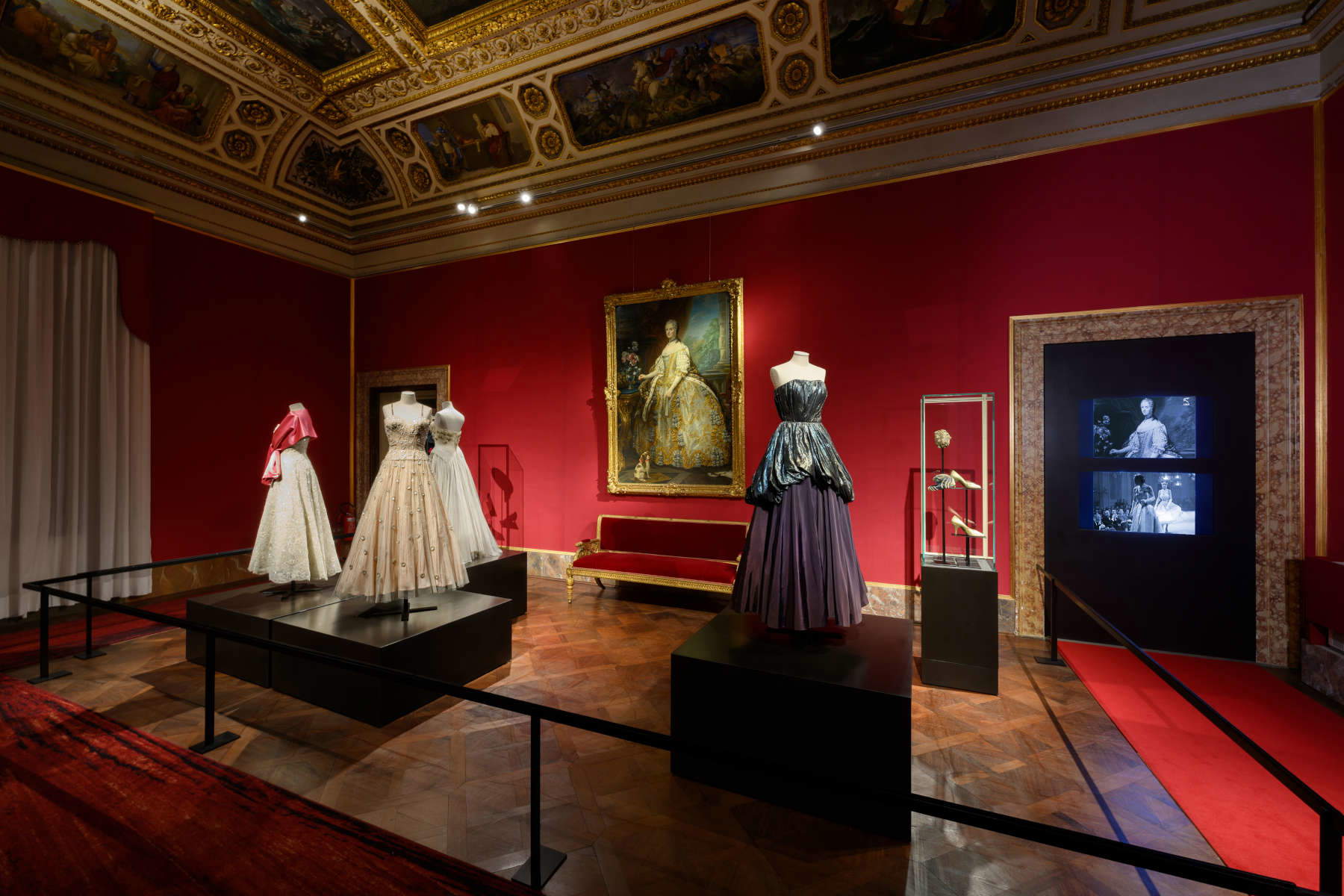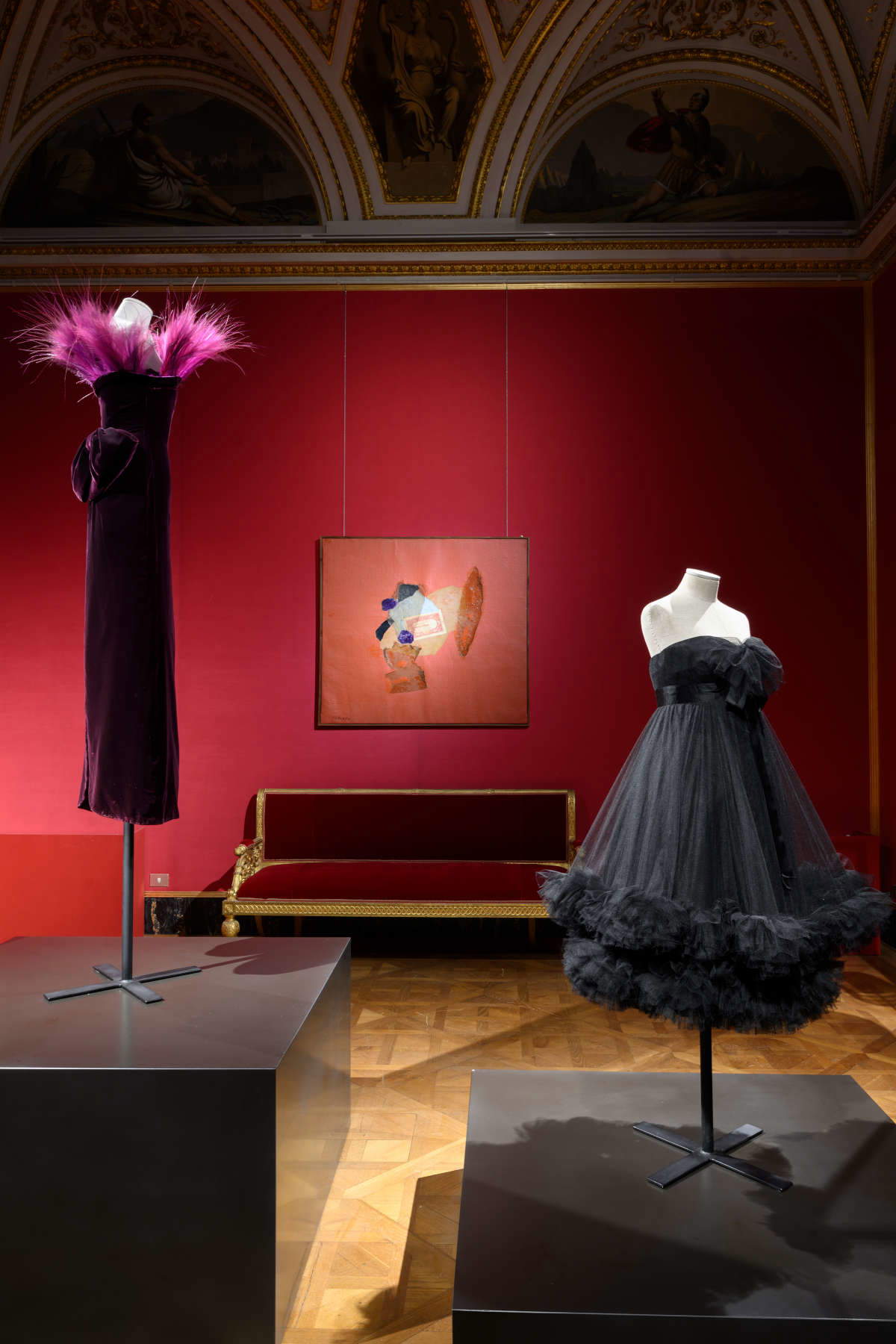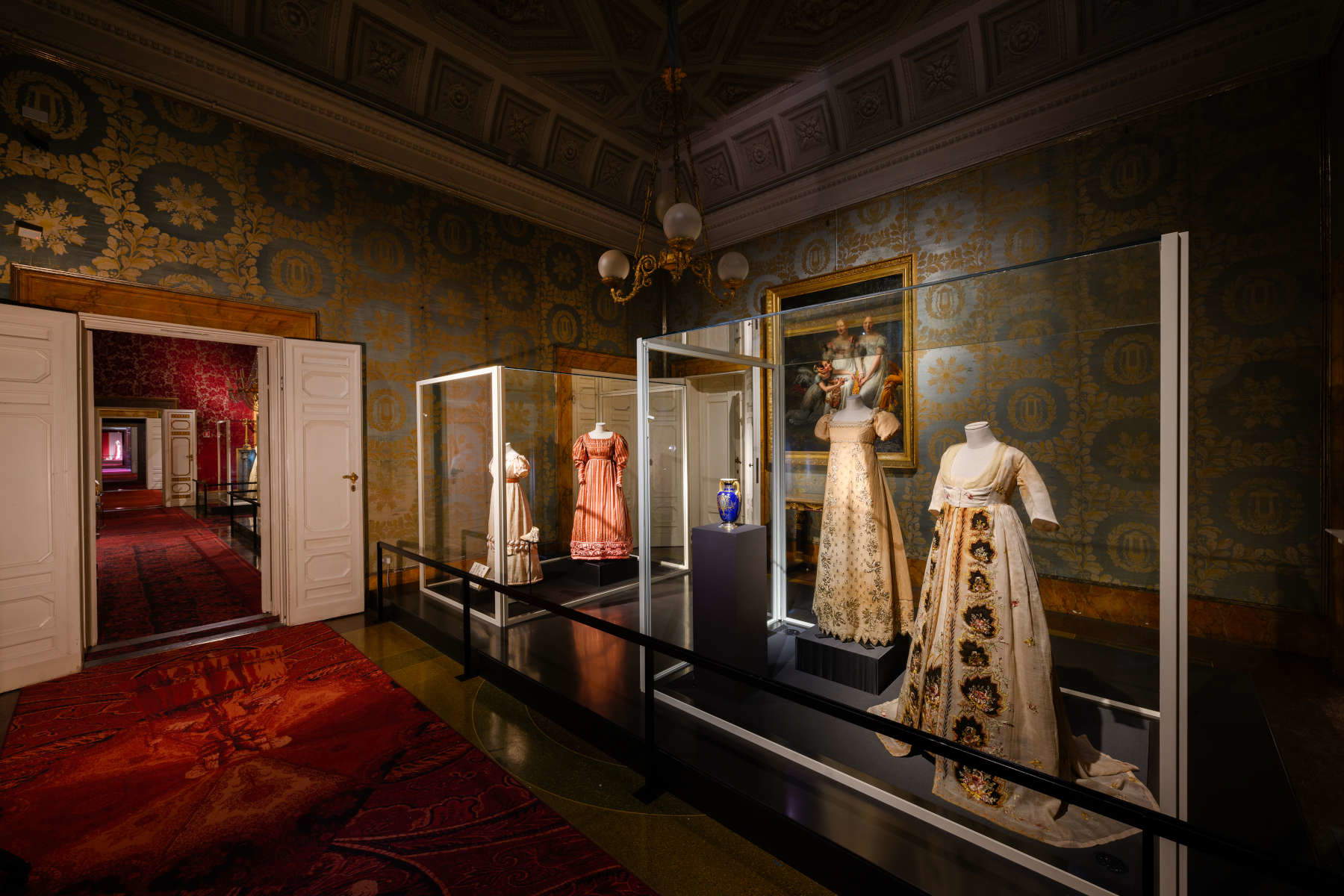In Florence, after more than four years of closure, the Fashion and Costume Museum at the Pitti Palace reopens fully to the public. The total rearrangement of the museum has led to the creation of eight new rooms, which now display the core of the permanent collection, including sixty dresses and numerous precious accessories. The section on 18th- and 19th-century costume can finally be visited, with twenty rare garments representative of the luxury of the period, in dialogue with paintings by great portrait painters of the time.
The newly opened rooms offer a fascinating overview of eighteenth- and nineteenth-century fashion, with clothes, shoes, bags, gloves, hats, and accessories such as umbrellas and fans. Among the exhibits are luxurious eighteenth-century gowns, including typical examples of robe à la française, representative of a time when the court dictated dress fashions. Also on display are Empire-style gowns, such as one in ivory silk crepe adorned with silver-foil embroidery that belonged to Massimilla Celano, consort of Prailo Mayo, which testifies to how during the Napoleonic period garments became more comfortable, inspired by Grecizing classicism.
The tour continues with garments from the Restoration period, when the waistline of dresses was lowered and elaborate appliqués emerged from the garments like sculptural bas-reliefs. An example is the 1825 afternoon gown, in taffetas worked in patterns of stripes and palmettes. Among the rare 19th-century wedding gowns on display are a gilded silk model adorned with a peony and daisy motif, which belonged to Angiola Polese, and a Charles Frederick Worth wedding dress in satin and ivory gros de Tours, a shining example of the sartorial virtuosity of the period.
The evening outfits of fin de siècle fashion take center stage, with such garments as a black mechanical needle-net dress on ivory silk satin by Catherine Donovan and a yellow and green chiffon Liberty robe by Raphael Goudstikker, representative of the opulent preciousness of the Belle Époque. To the sophisticated clothing of the early twentieth century is dedicated a room inspired by the estheticizing climate of the period, with creations by Mariano Fortuny for Eleonora Duse and a kimono house dress of Donna Franca Florio by Jacques Doucet, among the most beloved tailors of the divas of the time.
The museum’s permanent collection, organized according to historical-chronological criteria, includes about sixty garments from the 18th to the 21st century and as many accessories, including shoes, bags, fans, umbrellas, gloves and hats. For the first time in the museum’s history, the tour focuses on the collection’s main core of garments, taking visitors through the history of costume and fashion. Fashion creations dialogue with selected paintings from the Uffizi Galleries’ collections, offering a visual counterpoint that includes works by great eighteenth- and nineteenth-century portrait painters such as Carle Vanloo, Laurent Pecheux, Jean-Sébastien Rouillard, Clemente Alberi and Giuseppe Colzi de’ Cavalcanti, as well as Italian avant-garde artists such as Massimo Campigli, Giulio Turcato, Corrado Cagli and Alberto Burri.












The section devoted to 20th-century and contemporary fashion, which opened last December, includes iconic garments such as Elsa Schiaparelli’s evening gowns, Emilio Schubert’s creations for the divas of the 1950s, and Patty Pravo’s dress by Gianni Versace. Other famous pieces include Jean Paul Gaultier’s black sheath made famous by Madonna and Gianfranco Ferré’s collection for Dior. The fashion history of the 20th century and the early years of the new millennium is told through twelve new rooms, as well as the 19th-century Ballroom, paying homage to a century rich in styles and innovations.
The Fashion and Costume Museum at the Pitti Palace was inaugurated on Oct. 8, 1983, by Kirsten Aschengreen Piacenti as the Costume Gallery. The collection, initially made up of significant donations such as those of Emilio Pucci and Roberta di Camerino, has grown exponentially over the years. Recent donations and acquisitions have supplemented numerous men’s pieces, further expanding the museum’s holdings, now fully digitized and accessible online.
With its full reopening, the Fashion Museum at Palazzo Pitti presents itself to the public renewed and updated, offering an experience that celebrates centuries of costume and fashion history. “Costume and its history are intrinsically connected with art, and we wanted to emphasize this connection through the pairing of clothes with a selection of prestigious paintings,” says Simone Verde, director of the Uffizi Galleries. “The rearrangement of the Fashion Museum is very important for the Galleries: this institute, the only one of its kind in Italy, contributes to connecting the complex with the most vivid contemporaneity, allowing us to play a role marked by the most multifaceted multidisciplinarity, in connection and adjacency, as is traditional for the world of fashion, with theater, dance, photography and performing arts.”
“Creating for the first time in the museum’s history the permanent exhibition of the core collection was an exciting challenge,” says Vanessa Gavioli, curator of the Fashion Museum. “The goal from the beginning was that the highlights of a collection of more than 15,000 inventory numbers would emerge from the narrative of this itinerary. Obviously for conservation reasons there will be rotations but the chronological and conceptual grid will remain stable.”
 |
| Florence, Pitti Palace's Museum of Fashion and Costume reopens, refurbished |
Warning: the translation into English of the original Italian article was created using automatic tools. We undertake to review all articles, but we do not guarantee the total absence of inaccuracies in the translation due to the program. You can find the original by clicking on the ITA button. If you find any mistake,please contact us.